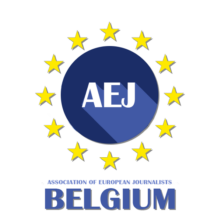By Miquel Sánchez
In recent years, the rapid advancement of technology and the rise of digital platforms have significantly transformed the media landscape. As a result, there has been an ongoing debate about whether these platforms, along with their algorithms that select and distribute news, should be considered as “media services”, following Article 2 of the Regulation establishing a common framework for media services in the internal market (European Media Freedom Act) and amending Directive 2010/13/EU.

The European Media Freedom Act (EMFA) is a legislative proposal put forth by the European Union (EU) to safeguard media freedom within its member states. The act seeks to ensure that journalists can operate independently without undue interference or censorship. It also aims to protect journalists from threats, violence, and harassment while promoting transparency and accountability in media organisations.
One of the key issues addressed by the EMFA is the changing nature of media consumption in the digital age. Traditional media outlets such as newspapers, television channels, and radio stations have faced significant challenges due to the emergence of digital alternatives. These platforms, including social networks, search engines, and news aggregators, have become primary sources of news for many individuals.
However, unlike traditional media outlets that are subject to regulations and ethical standards, digital platforms operate in a relatively unregulated space. As EMIF’s Paolo Cesarini pointed out at the conference “Countering Disinformation During the Rise of AI: 2 Years of EMIF’s impact” on Friday 30 June, this has raised concerns about their influence on public opinion and their responsibility to disseminate accurate and reliable information. As a result, there is a “growing demand for these platforms to be held accountable for their role in shaping public discourse.”.
The debate surrounding whether digital platforms and algorithms should be considered as “media services” revolves around the definition on Article 2 of the Regulation establishing a common framework for media services in the internal market (European Media Freedom Act) and amending Directive 2010/13/EU:
‘Media service’ means a service as defined by Articles 56 and 57 of the Treaty, where the principal purpose of the service or a dissociable section thereof consists in providing programmes or press publications to the general public, by any means, in order to inform, entertain or educate, under the editorial responsibility of a media service provider.‘
The EMFA recognizes that digital platforms and algorithms can be considered as “media services” because they fulfill the criteria outlined in Article 2. Firstly, they provide programmes or press publications to the “general public”. Although these platforms may not create original content themselves, they aggregate and distribute news articles, videos, podcasts, and other forms of media from various sources to their users. This dissemination of news content is done with the intention of informing, entertaining, or educating the “general public”.
Secondly, these platforms operate under the editorial responsibility of a media service provider. While they may not have traditional editors in the same sense as traditional media outlets, they exercise editorial control through algorithmic decision-making processes. The algorithms used by these platforms determine which news articles are shown to users based on predefined criteria and rules set by the platform owners. This editorial responsibility lies with the platform owners who have control over how news content is selected, prioritised, and presented to users.
Lastly, the principal purpose of these digital platforms and algorithms is to provide news content to the “general public”. Although they may offer other services such as social networking or e-commerce, the distribution and selection of news content remain an important part of their operations. The algorithms used by these platforms are designed to optimise user engagement and satisfaction by delivering relevant and personalised news content. This indicates that the principal purpose of these platforms or a dissociable section thereof is to provide news programs or press publications.
Considering these platforms as “media services” under the definition provided in Article 2 of the EMFA has important implications for the quality of journalism. These platforms use algorithms that are designed to optimise user engagement and often prioritise content that generates higher levels of interaction, such as clickbait or sensationalist articles. This can lead to a proliferation of low-quality or misleading news articles being promoted over more substantive and reliable journalism.
Moreover, digital platforms have immense power in shaping public discourse by controlling the visibility and reach of news articles. Algorithms determine which articles are shown to users, potentially creating filter bubbles or echo chambers where individuals are only exposed to information that aligns with their existing beliefs or preferences. This can contribute to polarisation within society as people are less likely to encounter diverse perspectives or engage with conflicting viewpoints.
Furthermore, the influence of digital platforms and algorithms on the media landscape raises concerns about the concentration of power. A few dominant platforms control a significant portion of online news distribution, giving them substantial control over the information that reaches the public. This concentration of power can limit media pluralism and diversity, as smaller or independent news outlets may struggle to compete with the reach and visibility provided by these platforms.
To address these challenges, it is crucial to ensure transparency and accountability in the operations of digital platforms and algorithms. The EMFA recognizes the need for regulation in this area by considering digital platforms and algorithms as “media services”. By subjecting them to the same standards and responsibilities as traditional media service providers, it aims to promote fairness, accuracy, and diversity in news distribution. This can help safeguard the quality of journalism, foster a more informed society, and protect democratic values. Striking a balance between innovation, freedom of expression, and accountability is crucial in shaping the future of media in Europe.
